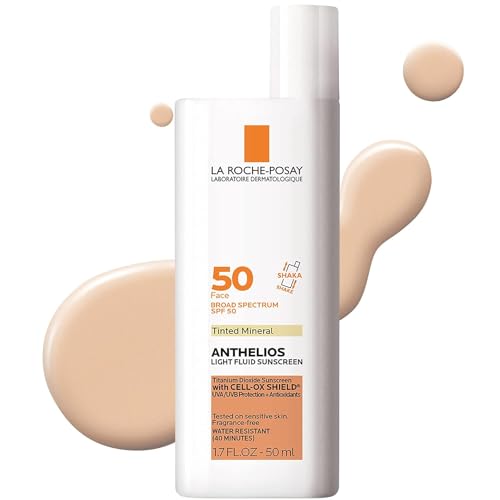Ever found yourself marveling at how sunscreen can disappear into your skin without a trace? That’s nanotechnology at work! Nanoparticles in sunscreen are the unsung heroes that provide robust protection while sparing you from looking like a ghostly apparition.
But what are these tiny defenders, and how do they manage to both shield and blend so seamlessly? We’ll explore the innovative world of nanoparticles, their role in sun protection. Get ready to dive into the microscopic universe that’s having a macro impact on the way we enjoy the sun safely.
More from Glowing Gorgeous: Find out here the Best Silicone-Free Moisturizers And Why Do You Care
What Are Nanoparticles Exactly?
Imagine a speck so small that it could waltz right through a wall of cells without a knock on the door. That’s the scale we’re talking about when we say ‘nanoparticles’. Specifically, in the sunscreen saga, we’re referring to Titanium Dioxide (TiO2) and Zinc Oxide (ZnO) particles that have been shrunk down to a nanometric scale.
These minuscule warriors are adept at absorbing, reflecting, and scattering harmful UV rays, offering a broad-spectrum defense against the sun’s relentless assault. But it’s not just about protection; these nanoparticles are also the reason your sunscreen doesn’t leave you looking like you’ve had a close encounter with a flour bag.
How Nanoparticles Interact with UV Rays
The science behind nanoparticles is as fascinating as it is functional. When TiO2 and ZnO are reduced to nano size, their surface area increases relative to their volume, allowing them to scatter and absorb UV rays more effectively than their larger counterparts. This means that even a thin layer of nanoparticle-infused sunscreen can provide strong sun protection.
But how exactly do these nanoparticles work their magic? They act like microscopic mirrors, reflecting and refracting sunlight away from the skin, or like sponges, absorbing the harmful rays before they can penetrate deeper into the skin.
Nanoparticles in the Quest of Beauty
The quest for sun protection that doesn’t compromise on looks has led to a breakthrough: the use of nanoparticles in sunscreens. These tiny particles offer a clear solution—literally—to the once unavoidable white residue left by traditional sunscreens.
Nanoparticles such as Titanium Dioxide (TiO2) and Zinc Oxide (ZnO) are engineered to be small enough that they don’t reflect visible light, thus eliminating the ghostly sheen. Instead, they scatter the UV rays that are invisible to the naked eye, providing robust protection without impacting the visual aesthetic of the skin.
Easy to Blend and Lightweight
This advancement is more than skin deep; it’s about inclusivity and comfort. People of all skin tones can now enjoy sunscreen that blends effortlessly into their skin, encouraging consistent use and better overall sun protection habits.
Moreover, the smooth, lightweight feel of nanoparticle-infused formulas means that sunscreen can be worn daily, not just at the beach but as an integral part of a skincare routine.
In addition to their vanishing act on the skin, nanoparticles have allowed for more elegant formulations that pair well with makeup, avoiding the pilling and patchiness that can occur with thicker, traditional sunscreens. This seamless integration into beauty regimens has made nanoparticles a darling of the cosmetic world.
Water and Sweat Resistance
But the benefits extend beyond aesthetics. Nanoparticles have enabled the development of sunscreen products that resist water and sweat better, providing long-lasting protection during activities where it’s needed most. From a morning jog to an afternoon swim, these sunscreens stay put, safeguarding your skin while maintaining a natural appearance.
More from Glowing Gorgeous: Find out here Hyram’s Recommended Face Sunscreens For The Summer
Risks of Nanoparticles in Sunscreen
When it comes to the ingredients we put on our skin, especially those designed to protect it from the sun, safety is not just a priority—it’s a necessity. Nanoparticles have been a revolutionary force in sunscreen formulation, but with any innovation comes the responsibility to examine potential risks.
The safety of nanoparticles in sunscreens has been scrutinized under the scientific microscope, sparking a healthy debate and extensive research. One of the primary concerns with nanoparticles, particularly Titanium Dioxide (TiO2) and Zinc Oxide (ZnO), is whether they can penetrate the skin and reach the living tissues beneath.
Toxicity Concerns
In the dynamic dialogue about nanoparticles, toxicity is often a headline-grabbing topic. But what does the science say? When it comes to Titanium Dioxide (TiO2) and Zinc Oxide (ZnO) nanoparticles, the type commonly used in sunscreens, research has been rigorous and revealing.
Studies have systematically evaluated the potential for these nanoparticles to cause cellular damage or disrupt biological systems. The verdict? Current evidence suggests that the nanoparticles used in sunscreen formulations do not exhibit significant toxicity when applied to the skin in real-world scenarios.
The consensus from numerous studies is reassuring: these nanoparticles, when used in properly formulated sunscreens, do not infiltrate healthy, intact skin to a significant degree. This means that, for the vast majority of users, nanoparticles remain on the skin’s surface or in the outermost dead layer, where they can do their job of protecting against UV radiation without posing a risk to internal health.
Furthermore, the potential for systemic absorption and toxicity has been a focal point of research. The findings have been largely positive, with the current body of scientific literature supporting the conclusion that nanoparticle-containing sunscreens are safe for everyday use.
This is echoed by endorsements from various health and regulatory agencies around the world, which have deemed these products as safe when they adhere to strict manufacturing and application guidelines.
Despite the green light from science and regulators, the industry remains vigilant. Ongoing research is essential to keep pace with new developments and to ensure that the long-term use of nanoparticles does not have unforeseen consequences.
Environmental considerations are also part of the safety equation, with studies looking at the impact of nanoparticles on marine life and ecosystems, as these ingredients can wash off our bodies and into the water supply.
However, it’s important to acknowledge that research is an ever-evolving journey. Some laboratory studies have indicated that in certain conditions—often at higher concentrations than used in commercial products—nanoparticles can exhibit properties that warrant a closer look. But these conditions are not typically representative of everyday sunscreen use. It’s crucial to differentiate between potential risks identified under artificial conditions and the actual risks encountered by consumers.
Is it a Barrier or Penetrator?
The skin is our body’s largest organ and its primary line of defense against external threats, including UV radiation. But can nanoparticles breach this barrier? The short answer: it’s highly unlikely. The skin’s outermost layer, the stratum corneum, is adept at keeping unwanted substances out. Studies have shown that nanoparticles, such as those used in sunscreen, typically do not penetrate this protective layer to reach living tissues.
To assess the interaction between nanoparticles and the skin, scientists employ a variety of methods, including in vitro models, skin patch tests, and advanced imaging techniques. These studies have consistently found that healthy, intact skin is an effective barrier to nanoparticle penetration. Only when the skin is damaged or compromised might there be a concern, but even then, the extent of penetration appears to be minimal.
Nano vs Non-Nano: The Sunscreen Debate
The sunscreen aisle can sometimes feel like a battleground where “nano” and “non-nano” products vie for supremacy. But is one truly better than the other? Nano-sized particles, due to their minuscule size, offer clear aesthetic advantages and broad-spectrum UV protection.
On the flip side, non-nano particles, larger in size, are often championed for their inability to penetrate the skin, which some consumers find reassuring despite the lack of evidence that nano-sized particles do penetrate healthy skin.
Effectiveness is not in question—both nano and non-nano zinc oxide and titanium dioxide provide excellent protection against UV rays. However, the debate often hinges on safety perceptions and environmental considerations.
Some consumers lean towards non-nano formulations out of concern for potential health risks or environmental impact, despite the current scientific consensus on the safety of nano-sized particles in sunscreens.
Regulatory Perspective
The use of nanoparticles in sunscreens is not a free-for-all; it’s a tightly regulated affair. Regulatory bodies around the world, including the U.S. Food and Drug Administration (FDA) and the European Commission, have established guidelines to ensure the safety and efficacy of sunscreens containing nanoparticles. These agencies require a rigorous review of scientific data, including safety studies, before a nanoparticle-infused sunscreen can be approved for market.
In the United States, the FDA treats sunscreens as over-the-counter drugs, which means they undergo a thorough evaluation process. The European Union has similar regulations, with an added requirement for nano-sized ingredients to be explicitly labeled. Both regions continuously monitor the latest research and update their guidelines as new information becomes available.
Bottom Line
Navigating the world of sunscreens with nanoparticles can be complex, but it’s clear that these tiny ingredients pack a powerful punch in sun protection. Throughout this exploration, we’ve uncovered the aesthetic benefits of nanoparticles, addressed safety concerns, and dissected the nano vs non-nano debate. With rigorous research and stringent regulations in place, the consensus is that nanoparticle sunscreens are safe and effective for everyday use.
As consumers, it’s important to weigh the evidence, understand the science, and consider personal values and preferences when choosing sunscreen. Whether you opt for nano or non-nano formulations, the priority should always be to protect your skin from harmful UV rays.
Remember, the best sunscreen is the one you’ll use consistently. So, find a formula that feels good on your skin, suits your lifestyle, and holds up to the scrutiny of science. Your skin—and future self—will thank you.
FAQ’s
Are nanoparticles in sunscreen safe for all skin types?
Nanoparticles in sunscreen have been extensively tested and are considered safe for all skin types by major regulatory bodies. However, if you have specific skin conditions or concerns, consult with a dermatologist before use.
Can nanoparticles in sunscreen harm marine life?
Research on the environmental impact of nanoparticles, particularly on marine ecosystems, is ongoing. Some studies suggest certain forms of nanoparticles could harm marine life, leading to the development of more eco-friendly formulations.
How do I know if my sunscreen contains nanoparticles?
In many regions, including the European Union, sunscreens that contain nanoparticles must indicate this on the label. Look for terms like “nano” in the ingredient list or check with the manufacturer.
Do sunscreens with nanoparticles provide better UV protection?
Sunscreens with nanoparticles are highly effective at providing broad-spectrum UV protection due to their ability to scatter and absorb UV rays without leaving a white residue, making them a popular choice.
Can I use nanoparticle sunscreens on my children?
Yes, nanoparticle sunscreens are generally considered safe for children. However, as with any product applied to young skin, it’s advisable to choose sunscreens specifically formulated for children and to perform a patch test first.



 La Roche-Posay Anthelios Melt-In Milk Body & Face Sunscreen SPF 60, Oil Free...
La Roche-Posay Anthelios Melt-In Milk Body & Face Sunscreen SPF 60, Oil Free... La Roche-Posay Anthelios Tinted Sunscreen SPF 50, Ultra-Light Fluid Broad...
La Roche-Posay Anthelios Tinted Sunscreen SPF 50, Ultra-Light Fluid Broad... innisfree Daily UV Defense Sunscreen Broad Spectrum SPF 36 Face Lotion, 1.69 Fl...
innisfree Daily UV Defense Sunscreen Broad Spectrum SPF 36 Face Lotion, 1.69 Fl...
Comments